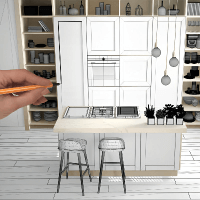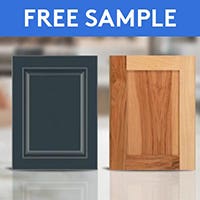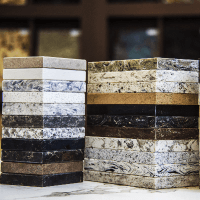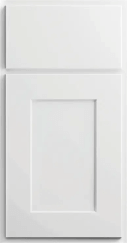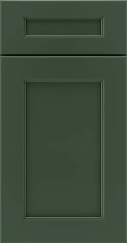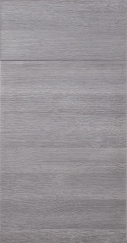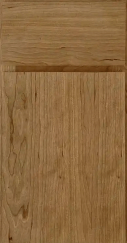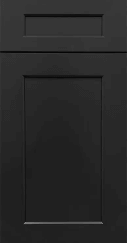


Characteristics of Cabinet Wood Types
Kitchen cabinets offer many door style wood types, so how do you know which one to choose? Each wood species has different characteristics from the texture of the wood to how the color changes over time. For kitchen designs with stained wood, it’s important to understand how the cabinets will change as time passes to make the most educated decision.
Maple, oak and other hardwoods are products of nature. How lumber from a certain species and tree will look and feel is affected by climate, soil nutrients, growing season, season of harvest and age at harvest. Every piece of wood – even from the same tree – will carry a slightly different color, texture and grain. These natural variations and imperfections add to the wood’s beauty and character.
Learn what to expect with each cabinet wood type, how they age over time and much more.
Types of Wood for Cabinets
Maple
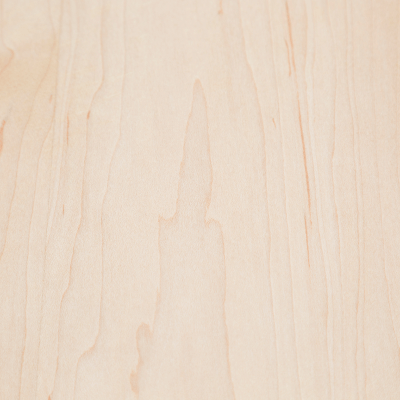

Maple is a hardwood with an open grain pattern. This kitchen cabinet wood species is blonde in color with minimal pink undertones and birdseye wave patterns making it versatile for cabinets and furniture.
Cherry
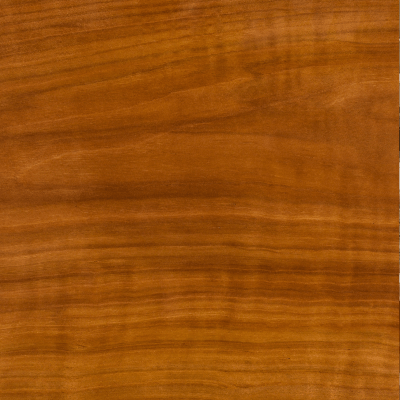

Cherry is a hardwood with a closed grain pattern that varies from dramatic red to reddish brown. This species is used in high-end furniture because of its beautiful, winding grain patterns and rich color.
Hickory
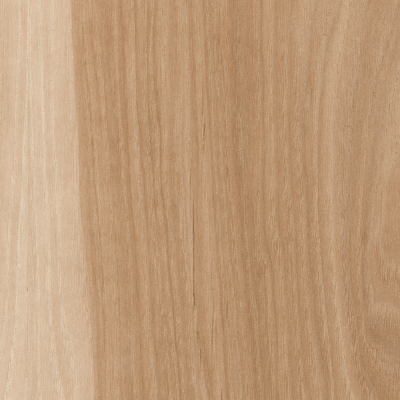

Hickory is a hardwood with open grain patterns and large color variations. Differences in color can include a blonde hue to bold reddish-brown tones which work well in rustic furniture and designs.
Oak
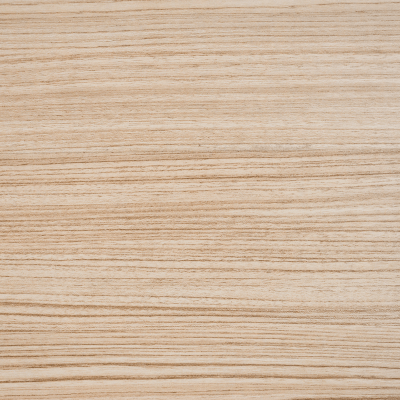

Oak is a hardwood with more rigid open grain patterns. This wood species shows much more texture and is usually golden in color with slight red undertones. Oak is a great durable option for cabinets, flooring and more.
Alder
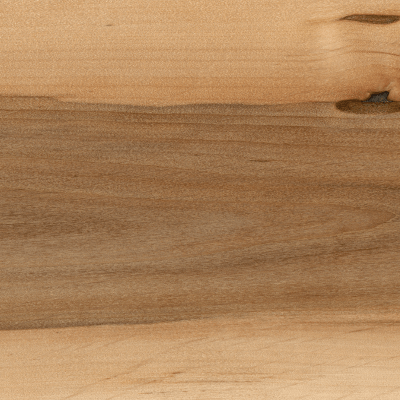

Alder is a softer, closed grained hardwood with occasional knots, and a light brown hue with some yellow and reddish tones. This rustic wood type is very versatile and used for furniture, flooring, paneling, window frames and more.
Hardwood
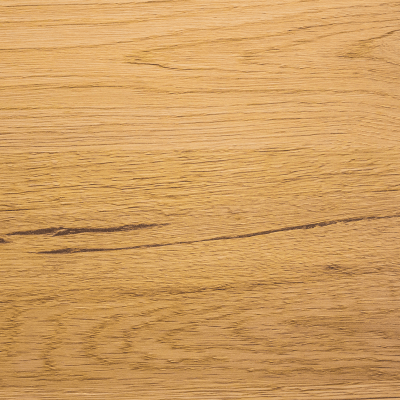

Hardwood describes multiple wood types used to construct cabinetry and furniture. The most used hardwoods are Cherry, Oak, Hickory and Maple.
MDF
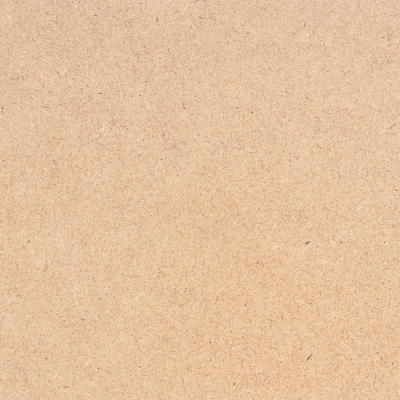

MDF is a manufactured wood product which stands for Medium Density Fiberboard. This material is made from compacted wood particles and resin to create a durable door style or wood panel that does not expand and contract like traditional wood planks. MDF is used for slab door styles, some furniture and cabinet walls and panels.
Walnut
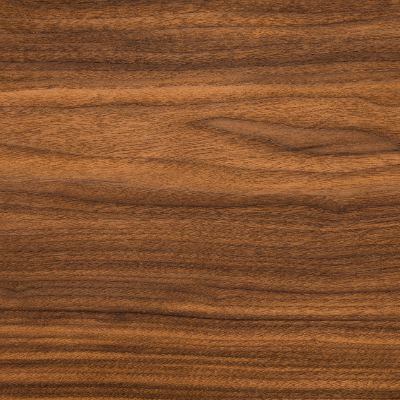

Walnut is a closed grain hardwood. This wood type is a beautiful chocolatey-brown color with occasional creamy-white streaks. Walnut is most often used in high-end kitchen designs, furniture, wood cutting boards and more.
What to Expect With Aging Wood Cabinets
Each type of wood for kitchen cabinets ages differently and all are impacted by heat, humidity, light and air. Since wood is a product of nature, it’s in a constant state of change including expansion, contraction and shifts in color. Most wood species tend to develop richer more beautiful hues as they age, however, each species is completely unique and will adjust based on its environment.
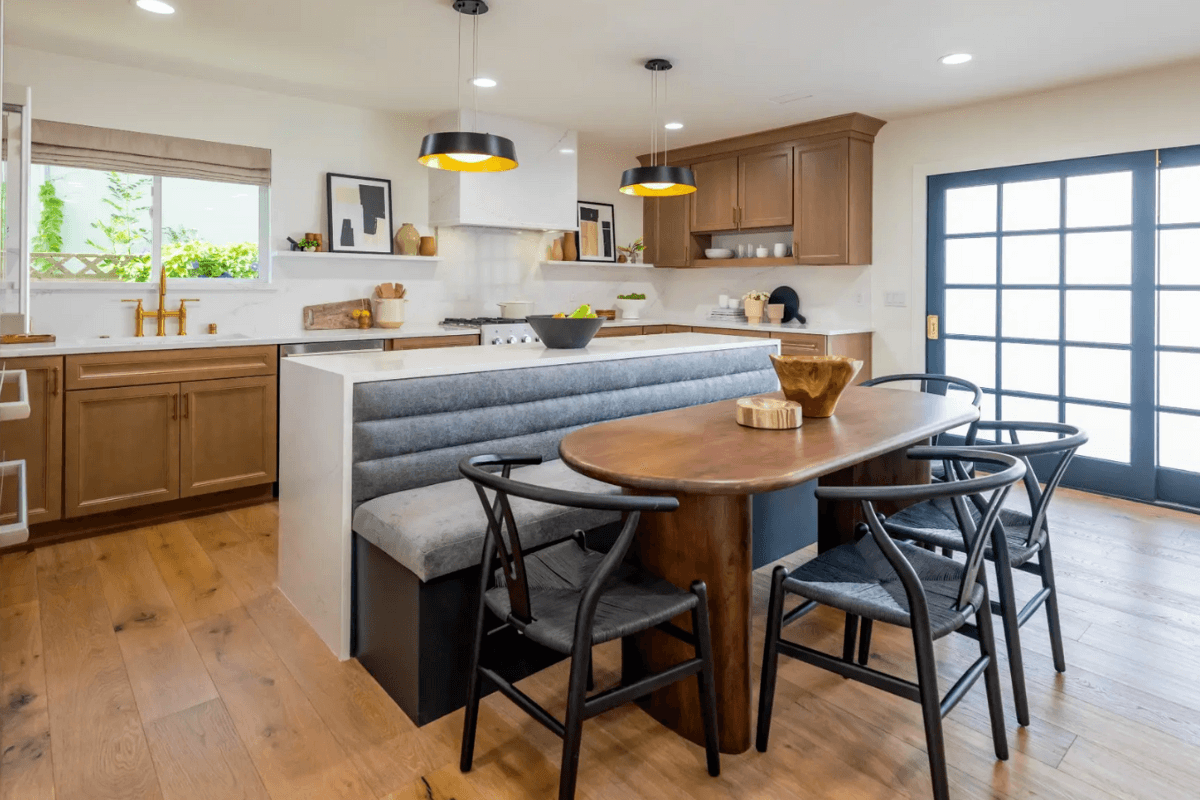

The color you see on your kitchen cabinets will also be determined by the stain. Wood coated in light to medium stains will show age-related color changes and grain variations more easily than a dark stain. Darker finishes cover the natural colors of wood, leaving only the grain pattern visible. These finishes are great for creating a contemporary aesthetic. Keep in mind that prolonged UV sun exposure can cause your cabinets to lighten, similar to what furniture and draperies experience when sitting in the sun.
As you shop for cabinets, find the wood type that meets your needs based on the grain style, color after it ages and how stains will look on the different cabinet wood types.
Maple
Brand new maple cabinets start in a lighter blonde tone, but as they age, they will acquire a gold tone. Maple will look warmer over time and the tone will depend on surrounding environmental factors.
Cherry
Young cherry cabinets look very light compared to how they age. This highly sought-after wood species changes quickly and develops a richer red tone with amber undertones. Lighter stains will show this quick transition much more easily because of the wood’s naturally bold colors.
Hickory
Hickory starts with dramatic blonde and light brown streaks with red undertones. Unlike the aging process of other woods, the blonde color gets much lighter over time while the brown tone generally stays the same giving it a rustic appearance.
Oak
Oak cabinets are initially light yellow with pink undertones. However, the color after aging depends on whether it's red or white oak. Red oak turns a richer red color over time, and white oak, of course, turns more golden as time passes.
Alder
New alder cabinets have light honey and brown tones, but over time, the color develops a soft reddish tone, like young cherry wood before it ages.
MDF
Since MDF is made from compressed wood particles and resin, it’s used underneath wood veneers or painted finishes depending on the door style. MDF creates a smooth surface for painted finishes or a great surface for veneers since it doesn’t expand and contract as much as solid wood.
Walnut
Walnut wood tends to maintain its rich chocolate brown color and occasional light blonde streaks. Like most wood species though, the light wood tones transition into a golden color as time progresses.
Stain Differences to Consider Between Wood Species
Even though the same stain might be offered on multiple wood species, that does not mean it will look the same. As we have already learned, each wood type has its own grain patterns, textures, and color variations. All these things come into play when it comes to how wood stains appear.
For example, our Craftsman line’s Berkeley door is shown below in three different wood species: maple, cherry and oak. Each wood species is finished in our Hearth stain, but the color varies dramatically. As you can see, maple Hearth looks chocolatey in color, cherry Hearth looks like an espresso finish and oak Hearth has dark ash brown tones.
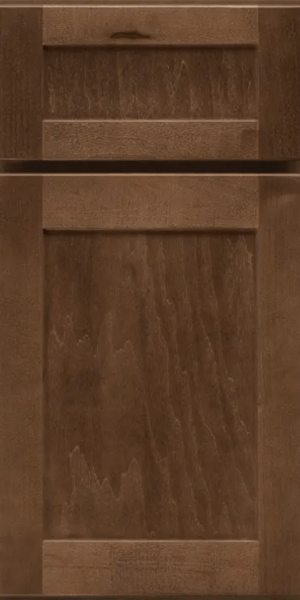

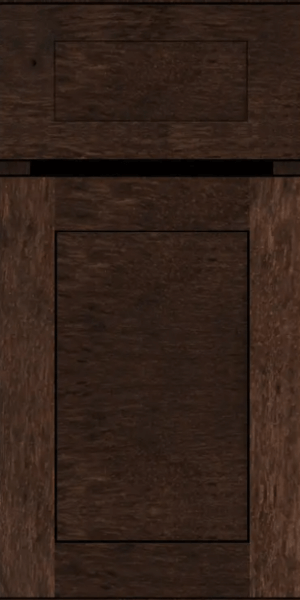

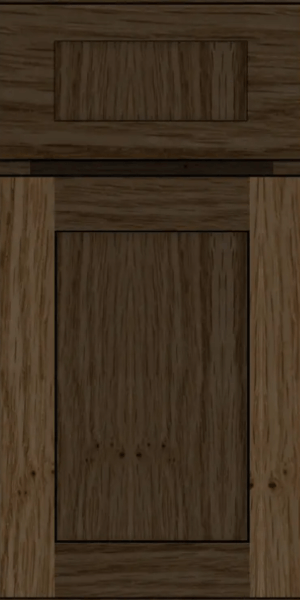

What Wood Species CliqStudios Offers
CliqStudios offers a wide variety of wood cabinets including maple, oak, cherry, hickory, MDF and solid hardwood cabinetry. The wood species for each line will vary with our most custom line, Craftsman, offering the most options.
View our wood species offering by cabinet line below.
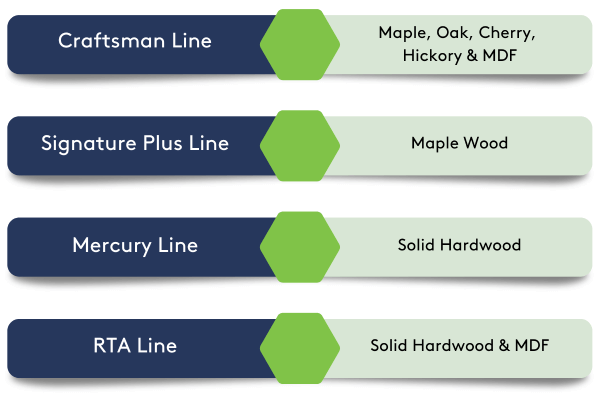

In addition to the standard oak in the Craftsman line, we also offer a quarter sawn cabinet option for a more natural, textured appearance. We exclusively offer red oak for its prominent grain, however, to achieve the popular white oak appearance, Craftsman delivers a finish called Lynx that uses a blocker to prevent red tones from showing through over time.
What’s the Difference Between Quarter Sawn & Plain Sawn Wood?
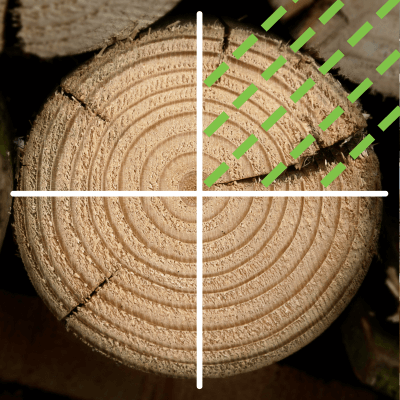

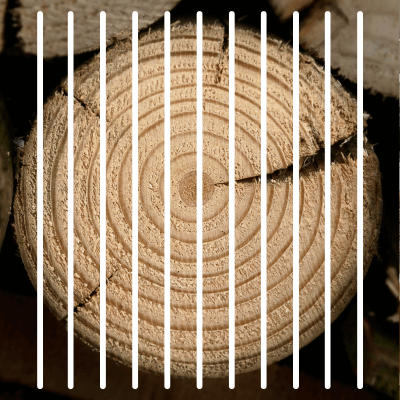

As you can see above, to get quarter sawn oak, the log is cut into quarters, then cut at a 90-degree angle towards the inner growth ring of the tree. This process exposes a beautiful aspect of the grain called “flake”. In addition to flake, quarter sawn grain pattern is vertical and close-knit. Its color ranges from light tan and pink to medium dark red and brown.
Plain sawn wood is much easier to cut and less expensive. This cut is achieved by making vertical cuts through the length of the log. The plain sawn approach is the most common option you will see in the market.
Find the perfect cabinet wood species for your home. Explore CliqStudios cabinets!
Constructing Wood Cabinets
CliqStudios offers cabinetry that is constructed from solid hardwood cabinet materials using construction methods that provide long life, and minimal shrinking and cracking.
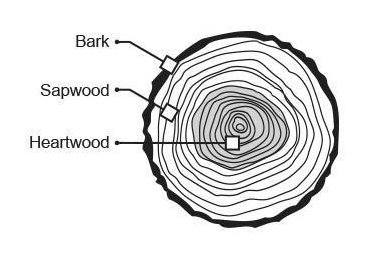

Heartwood and Sapwood
Trees contain two types of wood: heartwood and sapwood. Heartwood is the older growth found at the core of the tree, and sapwood is the newer growth found in the outer perimeter. Heartwood tends to be darker and transitions to a lighter color as it moves toward the outer sapwood. When building cabinets, we use a blend of heartwood and sapwood to showcase the unique beauty of the species and prevent the finished cabinetry from looking artificial or monochromatic.
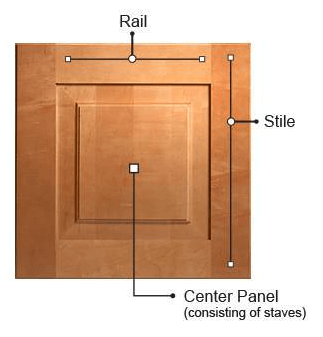

Wood Finished Cabinet Doors and Drawer Fronts
Cabinet door frames and inset-panel drawer front frames consist of solid wood stiles and rails. Wood raised-panel door and drawer center panels are made of several solid hardwood pieces known as staves, which vary in width. Staves are glued and planked together to create a panel that is 3/4″ thick. This panel is then machined and profiled into the door style of your choice. Wood flat door and drawer front inserts are hardwood veneer on medium-density fiberboard (MDF), a material that resists splitting and shrinkage.
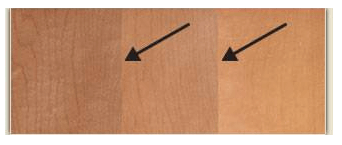

Planking
Planking is used when large pieces of solid wood, called staves, are required in the construction of door center panels and some specialty cabinets.
Joints
Joints refer to the areas of cabinetry where vertical and horizontal solid hardwood pieces (rails and stiles) come together to form corners. CliqStudios utilizes two sturdy joints to secure cabinet door frames. Dowel joints use two small, round wooden dowels and glue. Pocket-hole joints involve drilling a hole at an angle through one frame piece and guiding a screw through the hole to secure the two pieces together. We use two additional joints in the construction of cabinet doors. These joints are described below.
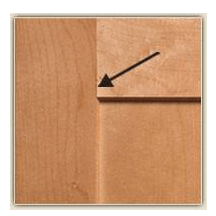

Mortise and Tenon Joint
In its most basic form, this joint is comprised of a tenon formed on the end of the rail. The tenon is then inserted into the mortise hole on the stile. This joint seam runs vertically between the two pieces of wood.
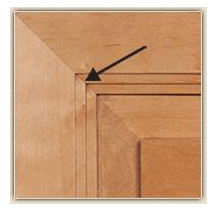

Miter Joint
A miter joint is made by cutting two pieces of wood at a 45° angle and securing them together to form a 90° angle. The seam of a miter joint runs diagonally through the door frame, which is ideal for door styles with detail.
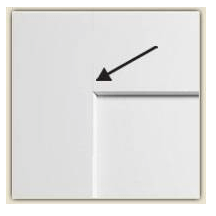

Joint Lines
Wood is in a constant state of expansion and contraction. This normal movement will cause hairline cracks in the finish surface to form at the joints on cabinet doors and face frames. Joint lines are more visible in painted finishes.
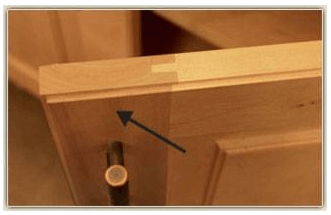

End Grain
End grain is exposed when wood is cut perpendicular to the direction of the grain. It is softer in composition than other areas of the wood and often appears darker because it absorbs more stain. This color variation is natural and cannot be prevented. End grain is present on mortise and tenon joints and is hidden on miter joints.
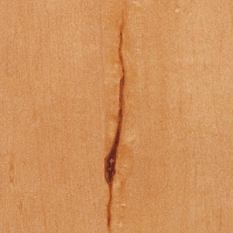

Mineral Streaks
Mineral deposits form in many wood types as the trees extract nutrients from the soil. Mineral deposits appear as brown or blackish-blue streaks in the grain. Depending on the applied finish, mineral streaks may appear lighter or darker than other areas of the wood.
Mineral streaks are a natural part of the hardwood used in CliqStudios cabinets. They may appear on the front of your cabinet doors, as well as the back where their size may be more prominent. Hardwood is a valuable resource, and we do our best to maximize our use of it, including the parts with mineral streaks, in order to minimize waste.
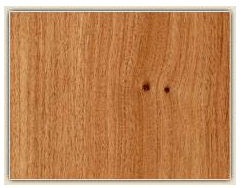

Pin Knots and Sap Pockets
Pin knots and sap pockets are a natural part of hardwood. They are created when small branches die or are broken off, leaving behind a small area that is filled by the decaying branch, which becomes darker than the sapwood that surrounds it. These marks do not compromise the quality of the wood.
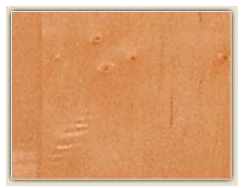

Insect Marks
As trees grow in nature, they are subject to the effects of creatures that call the forest home. Insects can bore into the tree and leave small marks and tracks in the wood. These markings may look similar to mineral streaks, but are generally smaller and much lighter in color.
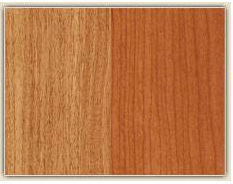

Aging
All wood types will mellow, darken or change color as they age. Even with our multi-step finish process, which uses a heat-cured, catalyzed topcoat varnish with UV inhibitors, the colors will still be affected by the environment. Paint finishes also change over time, especially their sheen. Smoke, moisture and heavy use of cooking oils with a lack of ventilation will rapidly affect all types of finishes.
One of the most beautiful and natural finishes for the home is wood. It never goes out of style, and you can always count on wood to add depth and character to any room. Although there are many things to consider before selecting the perfect option for you, remember that every species is beautiful for different reasons.
If you are nervous about making the ‘wrong decision’, talk to one of our CliqStudios designers. They are experts in color, styles, current trends and especially the wood species we offer. Our designers will talk through your preferences to help you find the wood species of your dreams.
Schedule an appointment for free assistance now!
Frequently Asked Questions
What cabinet wood types does CliqStudios offer?
CliqStudios offers a wide variety of cabinet wood types including maple, oak, cherry, hickory, MDF and solid hardwood cabinetry. The wood species for each line will vary with our most custom line, Craftsman, offering the most options.
What is the difference between quarter sawn and plain sawn wood?
To get quarter sawn oak, the log is cut into quarters, then cut at a 90-degree angle towards the inner growth ring of the tree. This process exposes a beautiful aspect of the grain called “flake”. In addition to flake, quarter sawn grain pattern is vertical and close-knit. Its color ranges from light tan and pink to medium dark red and brown.
Plain sawn wood is much easier to cut and less expensive. This cut is achieved by making vertical cuts through the length of the log. The plain sawn approach is the most common option you will see in the market.
Does CliqStudios offer white oak kitchen cabinets?
Currently, CliqStudios offers red oak for its prominent grain. However, to achieve the popular white oak appearance, our Craftsman cabinet line now offers a finish called Lynx that uses a blocker to prevent red tones from showing through as it ages. Lynx provides a very soft, toffee-colored finish that looks similar to white oak. This is a great option for anyone looking for a more chic natural look.
What is the best wood for cabinets?
Every cabinet company offers quality, tested wood materials, so finding the best wood for cabinets depends on your specific needs. Each kitchen design is unique so one person's preferences will be different than another.
First decide what you want long term. Do you love the look of aged wood that has vibrant color variations and unique veining? Then choose cherry, hickory or walnut wood. Or are you interested in wood that will remain neutral? If that’s the case, choose maple or birch for more color consistency.
Wood stains will also determine what your cabinet color looks like long term. Keep in mind that darker stains will allow less color variation to show through giving you a more modern and minimal look. Lighter stains will highlight changes in the natural wood tone over time, giving you a richer kitchen with more character and interest.
Pricing for wood cabinets will depend on availability and how unique the wood is. Typically, wood types like oak, maple, birch and hickory are lower in cost and cherry and walnut are more expensive. When budget and design are not matching up, two-tone designs can be a great solution. This way, you can use your desired wood species within focal points to create a more dynamic design while staying within budget.
For more information to help figure out which cabinet wood type works best for you, take our quiz now!
